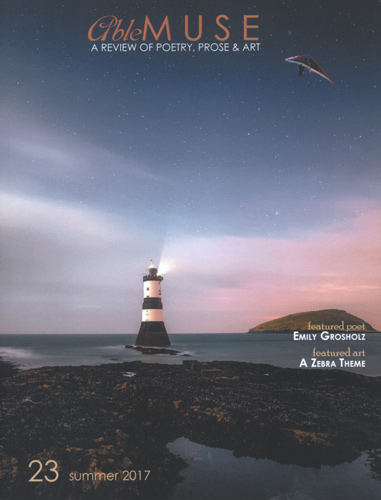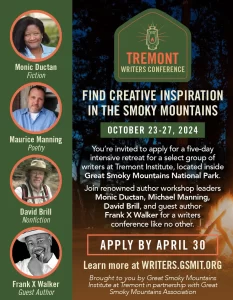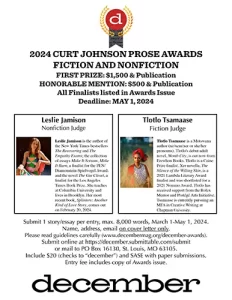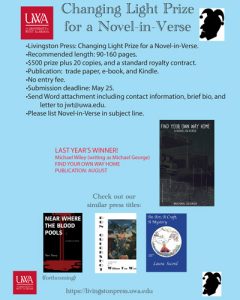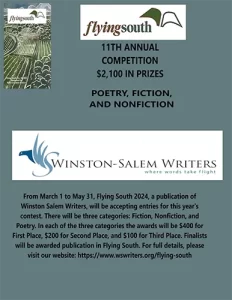Able Muse – Summer 2017
Where to start. The fans of Able Muse look forward to each issue’s featured poet and featured artist, and the Summer 2017 issue does not disappoint. The issue notably holds the attention with distinct content that varies from what one usually finds in a multi-genre journal.
Where to start. The fans of Able Muse look forward to each issue’s featured poet and featured artist, and the Summer 2017 issue does not disappoint. The issue notably holds the attention with distinct content that varies from what one usually finds in a multi-genre journal.
On the “heavy” side there is Tom Larsen’s “Ghost Story,” best for the mature audience and those with a rougher life experience, fictional or not, as the narrator, Riley, faces dying parts of his past: “I look him up and down. ’Have you seen yourself lately? Your nose is running and your pupils are like manhole covers. What are you on, Joey, everything?’”
On the lighter side there’s . . . hmmm . . . okay, this isn’t the lightest edition I could be reading. But it’s really darn good. Again, the content is mature. This isn’t a collection of grad students and professors getting published (no offense; I am one); it’s a collection of life stories, whether you’re looking at the prose or the poetry. Most of the works prompt the reader to see new perspectives and images; all of them are vividly appealing to the senses.
The work of the featured poet is the prime example; Emily Grosholz, interviewed by Mark Jarman, provides an introduction to her work that also describes a set of sources for new poets, including “Mathematical models,” and “dearest [ . . . ] lifelong friends.” She also notes: “There are indeed lots of trees and flowers in my poems. When I was in college, I bought a field guide to the trees.” Another mode of inspiration Grosholz reveals:
I learned that the metrical conventions appropriate for Latin verse had to be revised for our own, new, metamorphic English, with its Anglo-Saxon stressed and its Norman French habit of counting syllables. . . . how English poetry makes use of our linguistic habits as speakers of English; we tend to arrange our phrases and sentences iambically.
Following the interview, readers can find a selection of Grosholz’s poems, inviting us to look for and pick out the inspiration in the included pieces.
For the older military veteran, there is David Larsen’s memoir “Yellow Footprints.” Marines especially will appreciate the recounting of boot camp:
They both wore Smokey the Bear style covers, and, in contrast to our rumpled appearance, their utilities were without a single wrinkle, and their boots shone like obsidian. [ . . . ] Boot camp would teach us discipline, instant obedience to orders.
Larsen writes with detail as he recounts his days at boot camp and the cast of characters encountered there.
This issue’s featured artwork surprises. Instead of one artist, the photography in this issue is thematic, which can cause a hesitation. Because the theme is zebras. Photographs of zebras you say? Yes, I say. Didn’t think of that perspective, you’ll say. Zebra swans. Zebra butterflies. Zebra with lion. Surprise, I say.
Nine poets, two book reviews, two more fiction pieces, and an essay on “The Prosodic Techniques of T. S, Eliot’s Approximated Verse” provide the final polish to an inviting and informative collection of professional literature. Enjoy.
[www.ablemuse.com]

